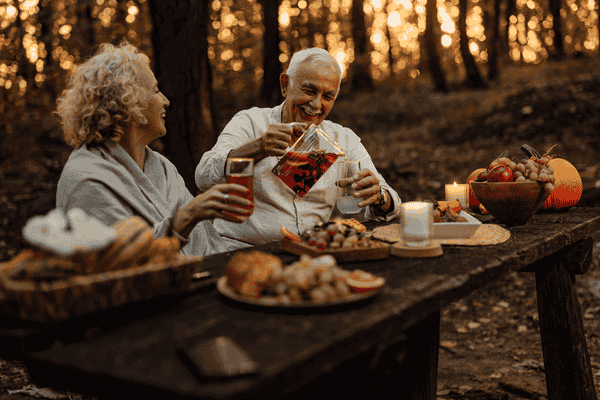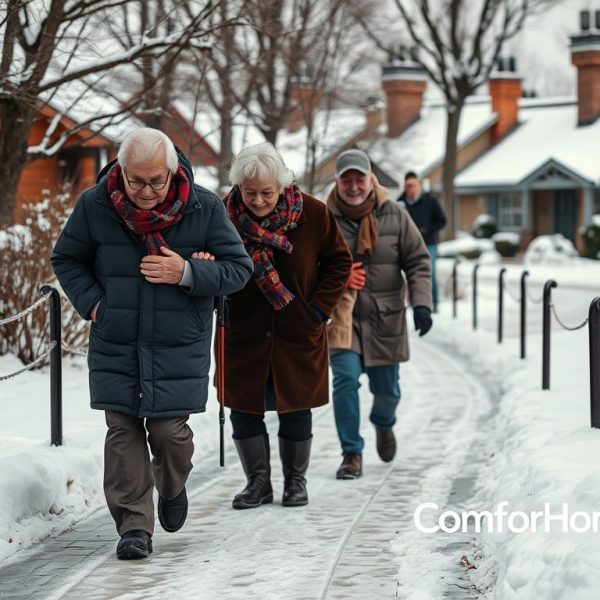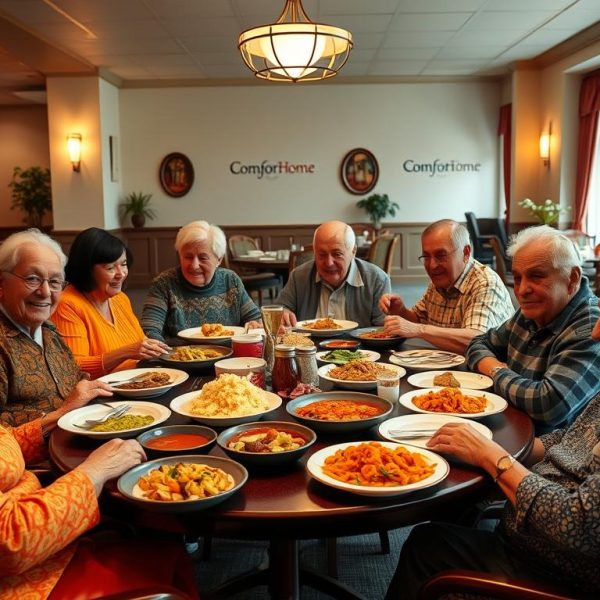As the leaves begin to turn vibrant shades of orange and gold, and the crisp air of autumn settles in, a sense of change envelops the world. For many, this season evokes memories of pumpkin-spiced everything, cozy sweaters, and the thrill of watching nature’s transformation. But for the elderly, autumn brings unique challenges and opportunities for enhancing their wellness.
In this ultimate guide, we will explore various strategies to promote the health and vitality of elderly individuals during the autumn months. From nutrition and physical activity to mental well-being and social connections, we will delve into practical tips and practices that can make a significant difference in their lives.
The Autumn Transition: A Time for Change
Let’s begin with a story about Clara, an 82-year-old woman who has always loved the autumn season. Each year, she would eagerly anticipate the arrival of fall, embracing the changes it brought. However, as the years passed, Clara noticed that her body didn’t react to the season as it once had. The colder weather made her joints ache, the shorter days left her feeling sluggish, and she found herself spending more time indoors, often feeling isolated.
Clara’s experience is not uncommon among the elderly. The autumn season can present various challenges that affect their physical and mental well-being. As caregivers or family members, it’s essential to understand these challenges and develop strategies to help enhance their overall wellness during this beautiful but transitional time of year.
1. Nutrition: Embracing Seasonal Foods
One of the most effective ways to enhance elderly wellness during autumn is through proper nutrition. Autumn brings a bounty of seasonal produce that can nourish the body and support health.
Emphasizing Whole Foods
Clara’s daughter, Rachel, decided to help her mother embrace the season’s offerings by introducing her to a variety of autumn fruits and vegetables. Together, they visited the local farmers’ market, where Clara was delighted to find pumpkins, squash, apples, and pears—all rich in vitamins, minerals, and antioxidants.
Encouraging elderly individuals to consume whole foods—such as fruits, vegetables, whole grains, lean proteins, and healthy fats—can improve their immune system and enhance their overall health.
Incorporating Comfort Foods
As the weather cools down, comfort foods become more appealing. Rachel and Clara started experimenting with nutritious recipes that included seasonal ingredients. They made hearty soups loaded with butternut squash, kale, and lentils, which provided warmth and nourishment.
Tips for Nutritional Wellness:
- Plan meals around seasonal produce: Encourage the inclusion of foods like sweet potatoes, Brussels sprouts, and apples.
- Focus on hydration: Remind elderly individuals to drink plenty of water, herbal teas, or warm broths, especially as the air becomes drier.
- Incorporate probiotics: Foods like yogurt and fermented vegetables can support gut health, which is essential for overall wellness.
2. Physical Activity: Staying Active Indoors and Outdoors
Maintaining physical activity during the autumn months is crucial for elderly wellness. Clara often felt less inclined to go outside as the temperatures dropped, but Rachel found creative ways to keep her elderly wellness.
Outdoor Activities
They decided to take advantage of the stunning fall scenery by going for daily walks in their neighborhood. The changing leaves provided a beautiful backdrop, making their walks not only beneficial for Clara’s physical health but also uplifting for her spirits.
Ideas for Outdoor Activities:
- Nature walks: Encourage short walks to enjoy the fall foliage, which can help improve mood and motivation.
- Gardening: If possible, engage them in light gardening tasks, such as planting bulbs for spring flowers or harvesting vegetables.
- Community classes: Check for local fitness classes designed for seniors, such as tai chi or gentle yoga.
Indoor Activities
On particularly chilly days, Rachel introduced Clara to indoor exercises. They started with gentle stretching, followed by seated exercises to improve strength and flexibility.
Indoor Activity Suggestions:
- Chair yoga: Simple yoga poses can enhance mobility and flexibility without putting too much strain on the body.
- Resistance bands: These can be used for strength training in a seated position.
- Dance: Play some of Clara’s favorite oldies and dance around the living room together for a fun, uplifting workout.
3. Mental Well-Being: Fostering Cognitive Health
As autumn ushers in darker days, it’s essential to pay attention to mental health. Seasonal changes can lead to feelings of sadness or isolation for some elderly individuals.
Engaging Activities
To keep Clara’s mind sharp and engaged, Rachel introduced her to activities that stimulated her cognitive abilities. They started solving puzzles together, playing board games, and even tried their hand at painting.
Mental Engagement Ideas:
- Puzzles and brain games: Crossword puzzles, Sudoku, and other brain teasers can keep the mind active.
- Creative pursuits: Encourage painting, knitting, or writing, which can enhance cognitive function and provide a sense of accomplishment.
- Book clubs or reading groups: If possible, join a local library book club or create one with friends and family.
Mindfulness and Relaxation
Rachel also introduced Clara to mindfulness practices, such as meditation and deep breathing exercises. These techniques helped Clara manage stress and maintain a sense of calm as the season changed.
Mindfulness Practices:
- Guided meditation: Utilize apps or videos that provide guided sessions tailored for seniors.
- Deep breathing exercises: Teach simple techniques for calming the mind and body.
- Journaling: Encourage Clara to write about her thoughts and feelings, promoting self-reflection and emotional clarity.
4. Social Connections: Strengthening Relationships
The cooler weather and shorter days can sometimes lead to feelings of isolation among the elderly. Clara often felt lonely, especially since her friends lived far away. Recognizing this, Rachel worked to enhance her mother’s social connections for elderly wellness.
Family Gatherings
They organized regular family dinners, inviting relatives over to enjoy a warm meal together. These gatherings not only provided Clara with companionship but also fostered a sense of belonging and support.
Social Connection Ideas:
- Regular family visits: Schedule regular check-ins and family gatherings to maintain connections.
- Community events: Encourage participation in local events, such as craft fairs, farmer’s markets, or church gatherings.
- Volunteer opportunities: Look for volunteering options that cater to seniors, allowing them to engage with the community.
Virtual Connections
For friends and family members who couldn’t be there in person, Rachel set up weekly video calls. Clara loved seeing familiar faces and sharing stories, which helped combat her feelings of isolation.
Tech Tips for Connection:
- Simple video call setups: Help elderly individuals learn how to use devices like tablets or smartphones for easy communication with family and friends.
- Social media: Encourage them to engage with family through social media platforms, sharing photos and updates.
5. Routine Health Check-Ups: Staying Proactive
As autumn sets in, it’s also a good time to ensure that elderly individuals maintain their health through regular check-ups. Clara had a history of seasonal allergies, and Rachel made sure she kept her doctor’s appointments and screenings up to date.
Health Monitoring
Regular check-ups are vital for detecting any health issues early on. Make a list of necessary appointments and follow-ups to ensure nothing is overlooked.
Health Check-Up Suggestions:
- Flu shots: Encourage getting vaccinated against seasonal flu to prevent illness.
- Routine screenings: Schedule check-ups for blood pressure, cholesterol, and other necessary health screenings.
- Medication reviews: Regularly review medications with a healthcare provider to ensure they remain appropriate and effective.
6. Creating a Safe Home Environment
As the weather changes, it’s essential to create a safe home environment for the elderly. Clara found that the cooler temperatures made her home feel drafty and cold, which could be uncomfortable. Rachel helped her make some adjustments to enhance safety and comfort.
Home Safety Tips
- Fall prevention: Ensure that pathways are clear, rugs are secured, and lighting is adequate to prevent slips and falls.
- Comfortable temperatures: Adjust heating systems or provide warm blankets to keep the home cozy.
- Emergency plans: Discuss emergency plans, including contacts for family members and local services that can assist in case of unexpected situations.
Conclusion: Embracing Autumn Wellness
As Clara embraced the autumn season with Rachel’s help, she found renewed energy and joy. The combination of nutritious meals, physical activity, mental engagement, social connections, and routine health check-ups transformed her experience. Rather than feeling isolated, she looked forward to the season’s beauty and the connections she had strengthened.
The autumn months can be a time of great change for elderly individuals, but with the right strategies and support, it can also be a season of vitality and wellness. By embracing the richness of this time of year and fostering health and happiness, we can enhance the well-being of our elderly loved ones, allowing them to thrive in every season of life.








